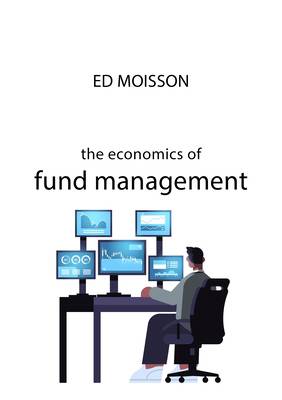
Vous voulez être sûr que vos cadeaux seront sous le sapin de Noël à temps? Nos magasins vous accueillent à bras ouverts. La plupart de nos magasins sont ouverts également les dimanches, vous pouvez vérifier les heures d'ouvertures sur notre site.
- Retrait gratuit dans votre magasin Club
- 7.000.000 titres dans notre catalogue
- Payer en toute sécurité
- Toujours un magasin près de chez vous
Vous voulez être sûr que vos cadeaux seront sous le sapin de Noël à temps? Nos magasins vous accueillent à bras ouverts. La plupart de nos magasins sont ouverts également les dimanches, vous pouvez vérifier les heures d'ouvertures sur notre site.
- Retrait gratuit dans votre magasin Club
- 7.000.0000 titres dans notre catalogue
- Payer en toute sécurité
- Toujours un magasin près de chez vous
27,45 €
+ 54 points
Format
Description
Although the asset management industry has come under increasing scrutiny since the financial crisis it still remains poorly understood and investment scandals continue to headline in the financial press. Whereas most literature on the industry focuses on the technical end - how managers invest and what tips others can glean - this book explores the way these businesses operate as businesses and how they make their money.
The book explains how the industry is organized, how firms generate revenues through various types of fund, fees and charges and what cost pressures they face. It investigates the nature of their client relationships, the role played by star investors and the requirement for firms to integrate non-financial considerations into their investment process. The inherent tensions and potential conflicts of interest within asset managers that seek to keep both clients and shareholders happy is also examined. The book concludes by considering how the industry is evolving, the role of regulation and where it is struggling to change.
Suitable for students of business and finance, those working in allied areas of the finance sector, and for anyone with a general interest in how financial institutions and markets operate, the book offers readers a balanced and incisive guide to the economics of an industry that globally controls more than $100 trillion of financial assets and a critical appraisal of the sector's future.
Spécifications
Parties prenantes
- Auteur(s) :
- Editeur:
Contenu
- Nombre de pages :
- 272
- Langue:
- Anglais
- Collection :
Caractéristiques
- EAN:
- 9781788215343
- Date de parution :
- 27-12-22
- Format:
- Livre broché
- Format numérique:
- Trade paperback (VS)
- Dimensions :
- 147 mm x 208 mm
- Poids :
- 362 g







